Diaper Dermatoses: A Photo Essay
Acrodermatitis enteropathica and Langerhans cell histocytosis are recalcitrant forms of diaper dermatitis( DD); other variants are: candidal DD, irritant or contact DD, Jacquet’s disease, and psoriasis.
Irritant or contact diaper dermatitis (DD) presents maximally on areas of skin in consistent contact with the irritant or allergen, ie, the convex areas of the groin but not the folds. This finding is the most useful clue for distinguishing between DD and diaper rash caused by candidal infection which favors the folds.
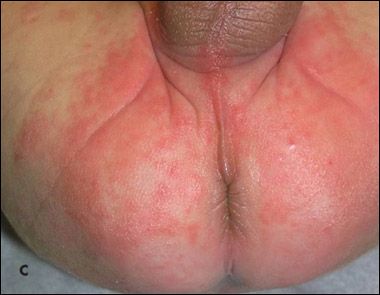
Courtesy of Drs. Douglas W. Kress and Robin P. Gehris
Inverse psoriasis, a form of the dermatitis that affects skin folds, can present in infants as diaper rash. Typical findings are diffuse, light pink erythema that starts in groin folds; a dry appearance (in contrast to the wet-appearing maceration in candidiasis [see next image]); and the absence of satellite pustules. In 2% of persons affected by psoriasis, the dermatitis appears before the age of 2 years.
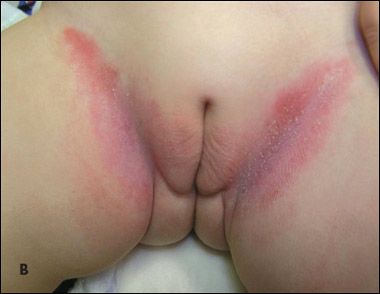
Courtesy of Drs. Douglas W. Kress and Robin P. Gehris
"Beefy red" erythema is a classic clinical finding in candidal or monilial diaper dermatitisas is maceration in the inguinal creases that gives the skin the appearance of being wet. Satellite pustules may emanate from the folds and form a confluent array on the convex skin surfaces.
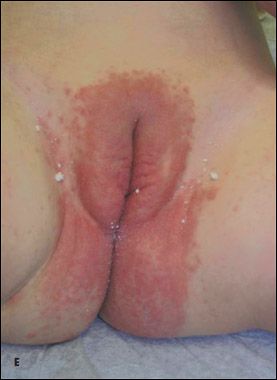
Courtesy of Drs. Douglas W. Kress and Robin P. Gehris
Skin findings associated with this infectious complication of intertrigo are similar to those of candidal diaper dermatitis (see previous image) but are distinguished by extensive involvement of noninguinal areas (ie, the nuchal, antecubital, and popliteal spaces) and an especially moist-looking appearance without satellitosis.
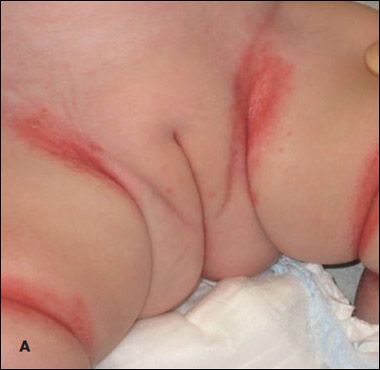
Courtesy of Drs. Douglas W. Kress and Robin P. Gehris
Acrodermatitis enteropathica, like Langerhans cell histocytosis (see next image) is a serious multisystem disease that may present as severe diaper rash. The rash presents as recalcitrant eczematous and crusted dermatitis perianally (upper image) and periorally (lower image) and is likened to "malignant seborrhea."
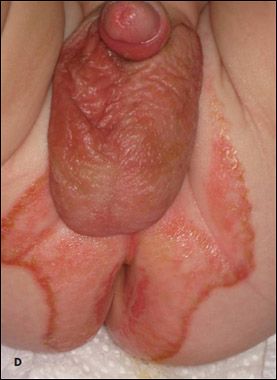
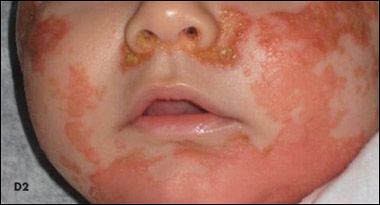
Courtesy of Drs. Douglas W. Kress and Robin P. Gehris
Langerhans cell histocytosis (LCH) appears as crusted papules with surrounding petechiae or pinpoint hemorrhage. Lymphadenopathy may or may not be present. Like acrodermatitis enteropathica (see previous image) LCH often is described as a more "malignant" form of seborrheic dermatitis.
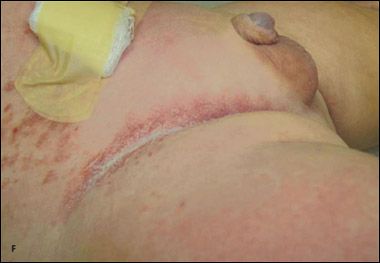
Courtesy of Drs. Douglas W. Kress and Robin P. Gehris
Jacquet's dermatitisis a rare, distinctive, severe variant of irritant diaper dermatitis characterized by punched-out erosions or ulcerations with crater-like borders. It is more common in children with chronic diarrhea or incontinence, such as those with spina bifida or Hirschsprung disease.
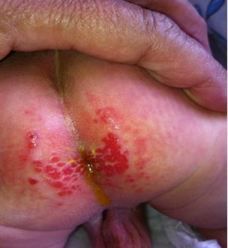

Photos courtesy of Hafez A. Nasr, MD and Duane C. Tucker, MD.
This rash on the lower body of a 1-week-old infant is typical of bullous impetigo. The multiple areas of denuded skin, consisting of ruptured bullae with underlying erythema, also were noted on the baby's face. Culture of fluid swabbed from an intact blister revealed Staphylococcus aureus.
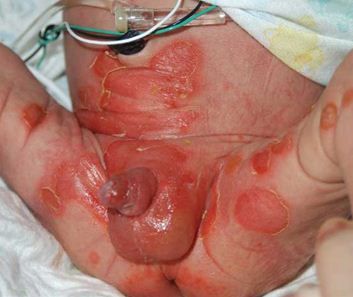
Photo courtesy of Dennis C Slagle, DO
Click here to return to first image
Recognize & Refer: Hemangiomas in pediatrics
July 17th 2019Contemporary Pediatrics sits down exclusively with Sheila Fallon Friedlander, MD, a professor dermatology and pediatrics, to discuss the one key condition for which she believes community pediatricians should be especially aware-hemangiomas.